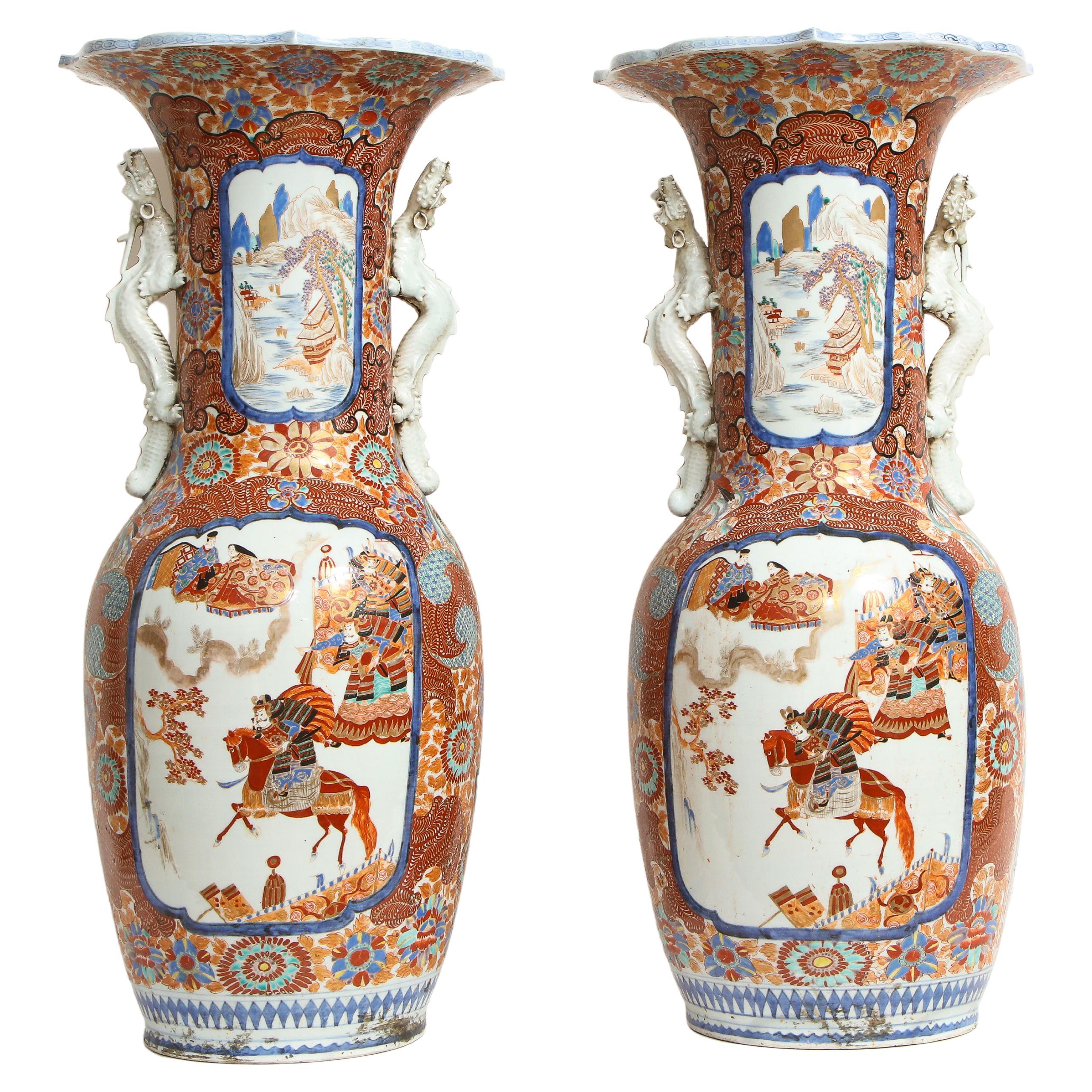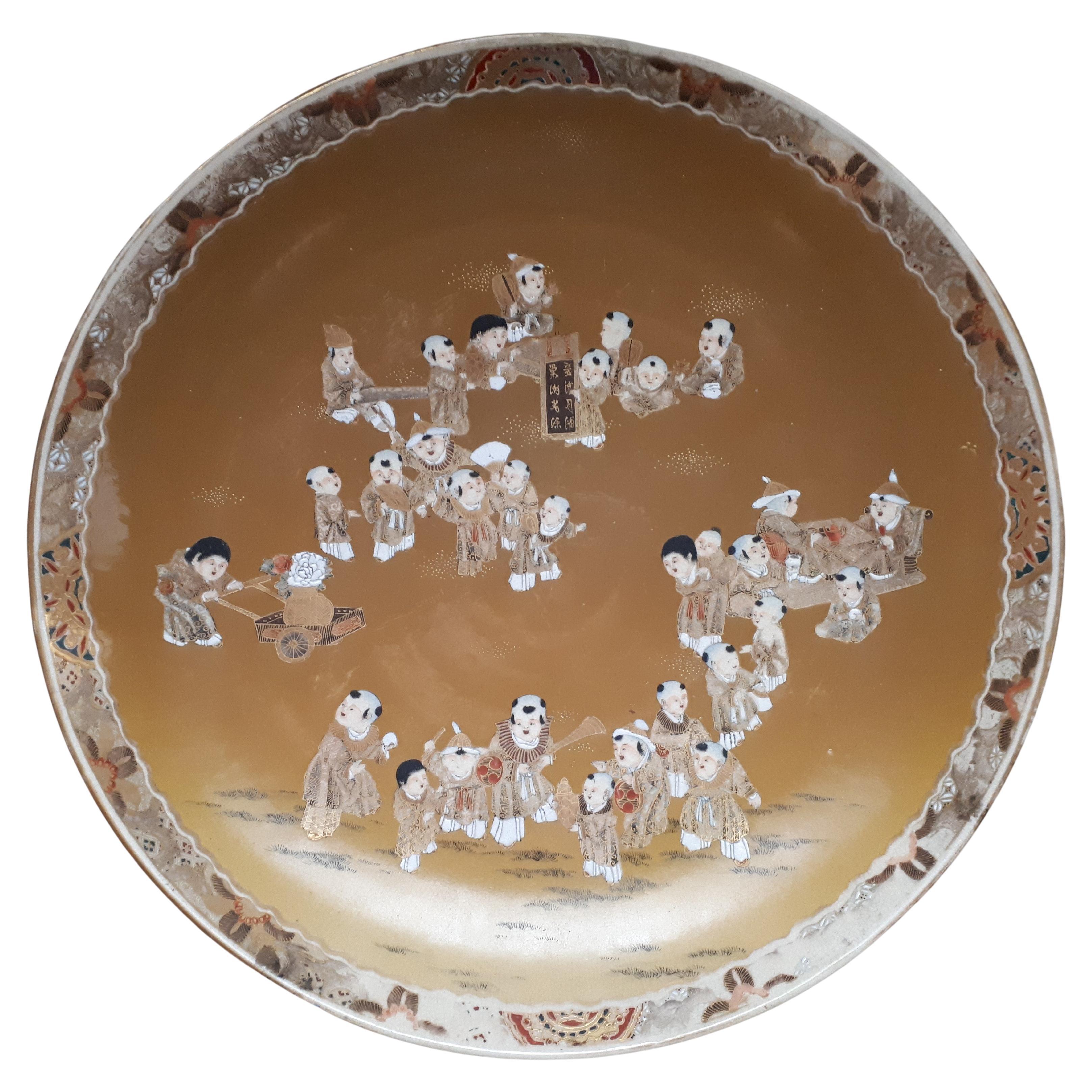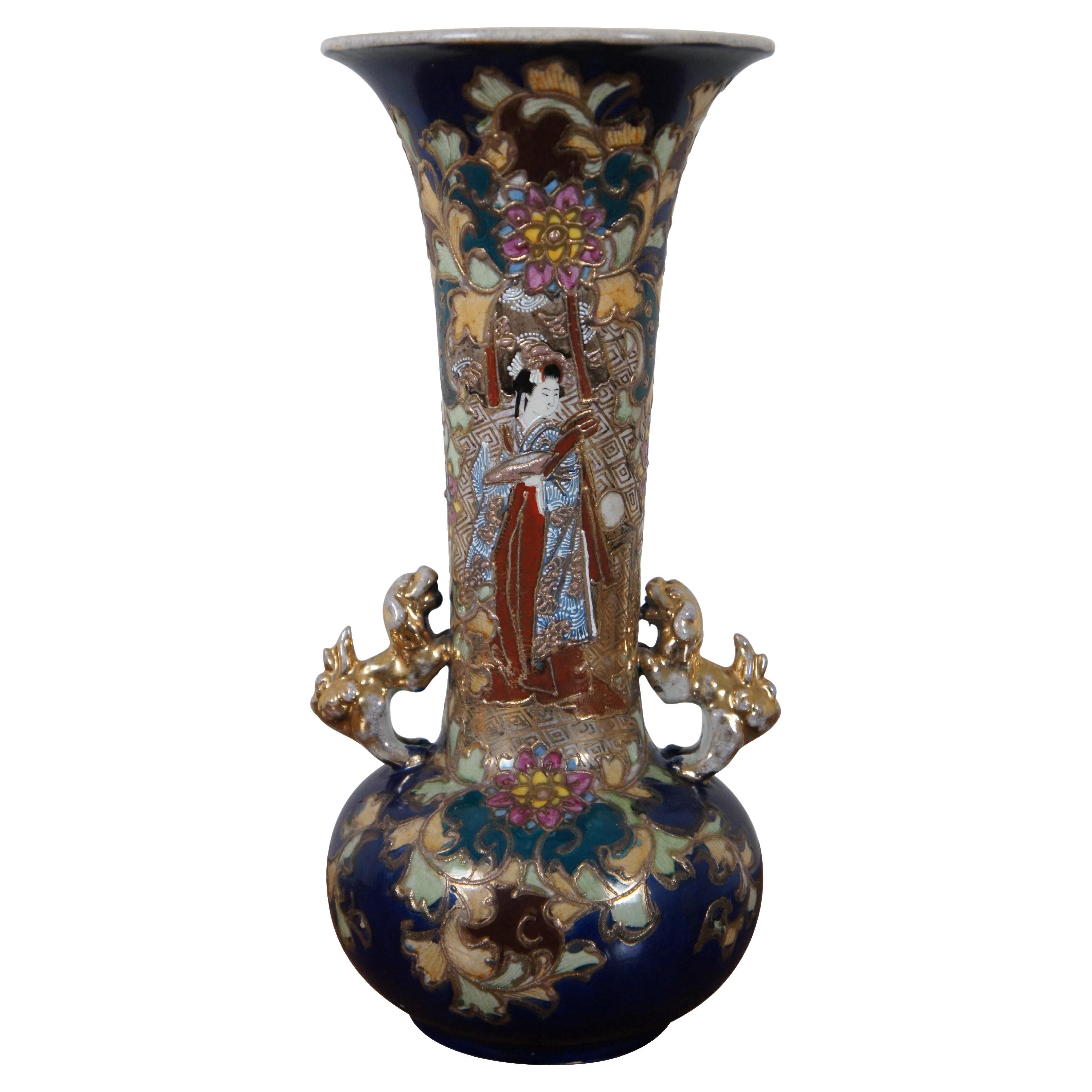Items Similar to Set of Two Japanese Cloissoné Vases Meiji Era Dragon and Pheonix
Want more images or videos?
Request additional images or videos from the seller
1 of 12
Set of Two Japanese Cloissoné Vases Meiji Era Dragon and Pheonix
About the Item
A pair of Japanese cloisonné enamel vases. Meiji era Japan (1867-1912), a period marked by rapid transformation of Japanese traditional society into a global power. The period of growth was preceded by an era of isolation, with Japan to a large extent being closed to Western trade. The Meiji era saw a boom in diplomatic, technological and commercial ties to the industrial West, resulting in the flourishing of both new and traditional forms of artistic expression and craftsmanship. These vases feature several decorative patterns, including floral patterns and Seigaiha (traditional Japanese wave patterns).
The vases feature two mythical creatures, the Hou-ou (which has close parallells with the Chinese Fenghuang and is sometimes called the Japanese Pheonix) and a dragon. These creatures, when represented together, generally symbolize the joining and harmony between the male and female (dragon and Phoenix respectively). They also represent Celestial and Imperial authority, as well as the wedding bliss of the Emperor och Empress, as they do in China.
Wear consistent with age and use.
- Dimensions:Height: 9.45 in (24 cm)Diameter: 4.34 in (11 cm)
- Sold As:Set of 2
- Style:Meiji (Of the Period)
- Materials and Techniques:Enamel,Cloissoné
- Place of Origin:
- Period:
- Date of Manufacture:Meiji Era
- Condition:Wear consistent with age and use.
- Seller Location:Knivsta, SE
- Reference Number:1stDibs: LU7571235194082
About the Seller
5.0
Gold Seller
These expertly vetted sellers are highly rated and consistently exceed customer expectations.
Established in 1996
1stDibs seller since 2022
35 sales on 1stDibs
Typical response time: <1 hour
- ShippingRetrieving quote...Ships From: Knivsta, Sweden
- Return PolicyA return for this item may be initiated within 14 days of delivery.
More From This SellerView All
- Charming Travel Desk Set, Leather and Brass, Latter Part of 19th CLocated in Knivsta, SECharming Travel Desk Set, Leather and Brass, Latter Part of 19th C, with original Roller, Brush and Boxes, including Ink Wells. A charming travel desk set in dark and purple-like ma...Category
Antique Late 19th Century European Desk Sets
MaterialsBrass
- Elegant set of three Cheese Trays from the Mid-20th CenturyLocated in Knivsta, SEElegant set of three Cheese Trays from the Mid-20th Century. Cool design in glass, brass and wood. The cheese trays have the following dimensions: 31,5*27*2 cm 25,5*21*2 cm 35*15*2 ...Category
Mid-20th Century European Serving Pieces
MaterialsBrass
- Danish Coffee set of three parts in Silver by Hans Bunde for CohrBy Hans BundeLocated in Knivsta, SEVery elegant Danish Coffee set of three parts in Silver by Hans Bunde (1919-1996) for Cohr. Designed in 1958 and with Danish and Swedish control stam...Category
Vintage 1950s Danish Mid-Century Modern Sterling Silver
MaterialsSilver
- Elegant Vodka Set in Crystal Glass from the first half of the 19th CenturyLocated in Knivsta, SEElegant Vodka Set in Crystal Glass from the first half of the 19th Century. Beautiful gilded decoration on the vodka bowl and the six accompanying glasses. Dimensions: Bowl, heigh...Category
Antique Mid-19th Century European Barware
MaterialsCrystal
- Sophisticated pewter vase in Swedish Grace dated 1932Located in Knivsta, SESophisticated pewter vase in Swedish Grace. Made by J.L. Hultman in Stockholm, Sweden and dated 1932. The vase is simply and elegantly decorated on one side with an openwork decorati...Category
Vintage 1930s Swedish Art Deco Vases
MaterialsPewter
- Pair of Bookends in Pewter with decoration of Adam and Eve by Just Andersen 1930By Just AndersenLocated in Knivsta, SEA beautiful Pair of Bookends in Pewter with decoration of Adam and Eve. Designed in 1930 by the famous designer Just Andersen (1884-1943) from Denmark and manufactured by the Swedish...Category
Vintage 1930s Swedish Art Deco Bookends
MaterialsPewter
You May Also Like
- Pair Of Seto Porcelain Covered Vases, Japan Meiji EraLocated in Saverne, Grand EstMagnificent pair of porcelain vases with a rich underglaze blue decoration of a couple of partridges among the vegetation. A minimal defect on each interior lid in the shape of a sty...Category
Antique Late 19th Century Japanese Meiji Ceramics
MaterialsPorcelain
- Pair of Japanese Meiji Period Imari Vases with Dragon HandlesLocated in New York, NYA Monumental pair of Japanese Meiji Period Imari vases with Dragon handles, Japanese Porcelain Studio Marks on Underside. Each is beautifully ...Category
Antique 1880s Japanese Meiji Ceramics
MaterialsPorcelain
- Large Japanese Satsuma Earthenware Dish, Meiji Era JapanLocated in Saverne, Grand EstLarge Satsuma earthenware dish decorated with "one hundred boys". Signed on the reverse. Japan around 1900Category
Early 20th Century Japanese Meiji Ceramics
MaterialsEarthenware
- Pair of Round Cloisonné Enamel Vases Meiji Era '1868-1912' DragonsLocated in Amsterdam, Noord HollandTop quality Meiji era (1868-1912), 19th century Each vase worked in gilt and wire of varying gauge with a mirrored design. Condition Vase one with some missing enamel/glaze spo...Category
Antique 19th Century Japanese Qing Ceramics
MaterialsPorcelain
- Magnificent Antique Japanese Satsuma Vase, Meiji Era, SignedLocated in London, GBA fine antique Japanese Satsuma vase. Meiji period. Signed. A very nice 19th century Japanese Satsuma ware vase of a relatively ...Category
Antique Late 19th Century Japanese Ceramics
MaterialsCeramic, Porcelain
- Antique Japanese Meiji Era Porcelain Satsuma Figural Kutani Vase Fu Dogs GeishaLocated in Dayton, OH"Late Meiji era Kutani vase, circa 1903. A beautiful porcelain blue ground centered by an intricate Geisha flanked by gold figural Foo Dog handles. Features a floral and foliat motif throughout. Signed along the base. Kutani ware, Japanese porcelain made in Kaga province (now in Ishikawa prefecture). The name “Old Kutani” refers to porcelain decorated with heavily applied overglaze enamels and produced in the Kaga mountain village of Kutani. The powerful Maeda family had established a kiln there by 1656. The clay bodies used were gray and coarse-grained. On most pieces—dishes and bowls were especially common—a white or blue-white matte glaze was decorated in dark, restrained colours, initially greens, yellows, and some reds, and later purples and dark blues. Some items had cobalt blue decoration under a white glaze. The most noted Old Kutani pieces are “Green Kutani,” in which most of the surface is covered in a green or blue-green glaze to which one or two colours have been added (or the glaze is applied evenly over a design executed in black). The bold designs of Kutani ware drew freely from Chinese ceramics, paintings, and textiles. They are renowned for their rich pictorial ornament executed in lively, intense lines. Owing to local financial problems and difficulties in obtaining the necessary pigments, the Kutani kiln was abandoned some time in the Genroku period (1688–1704). Ceramics production in Kaga enjoyed a renaissance early in the 19th century, however, including the establishment of another kiln at Kutani in the 1820s. In addition to a revival of the styles of Old Kutani ware, there arose a style using gold on a coral-red ground, which was perfected during another spate of activity that began in the 1860s. Technical advances were made and Western-style pigments were adopted, and by the 1890s modern Kutani...Category
Antique Early 1900s Meiji Vases
MaterialsPorcelain
Recently Viewed
View AllMore Ways To Browse
Used Asian Furniture
Asian Art Furniture
Asian Antique Art
Used Asian Ceramics
Chinese Dynasty
Chinese Antique Export
Chinese Export Antique
Japanese Art Pottery
Chinese White And Floral
Japanese Meiji Porcelain
Blue Bird China
Imari Red And Blue
Blue And White Export Porcelain
Chinese Imperial Furniture
Antique Chinese Green Glaze
Ming Base
Gilt Japanese Imari Porcelain
Black Asian Ceramic





